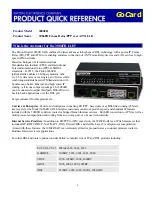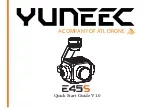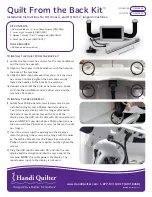
Rev. 1/2019
Installation & Operation Manual
Aquafount
®
360° Washfountain
WAF-5406-PSL-FT / WAF-5408-PSL-FT
Willoughby Industries, Inc.
TOLL FREE
(800) 428-4065
● LOCAL
(317) 875-0830
● FAX
(317) 875-0837
Page 17
www.willoughby-ind.com
The Willoughby Pneumatic Valve Assembly is designed as a pressure operated, piloted orifice self-closing valve. This type
of valve is used for lavatories as well as showers�
A strainer/checkstop is an integral part of the valve assembly and provides a means of shutting off the water if the valve
needs servicing. A check valve in the checkstop eliminates backflow into the supply lines. Fine mesh stainless steel
strainers keep normal line debris from interfering with the mechanical components of the valve.
By virtue of its design, a pneumatic self-closing valve is a normally closed valve� The valve will open when the hand or
foot pushbutton is depressed� The valve will close when the hand or foot pushbutton is released�The operating sequence
of the valve begins with pressing the pushbutton� Depressing the pushbutton forces air through the tubing into the air side
top cover of the valve� The air pressure on top of the actuating diaphragm causes the diaphragm and magnet to be forced
down. The magnetic force flowing through the barrier cup lifts the water side actuating disk. This allows the water pressure
to lift the water side diaphragm off the valve seat and allow water to flow through the valve.
Releasing the pushbutton relieves pressure through the tubing which releases the pressure above the actuating
diaphragm. The lack of air pressure on top of the actuating diaphragm allows the magnet spring to lift the magnet up and
away from the water side actuating disk. The water side spring on top of the water side actuating disk then forces the disk
downward� This seals the pilot hole in the seat diaphragm assembly� The water pressure then increases above the seat
diaphragm which closes the diaphragm against the valve seat and shuts the water off.
A piloted orifice in the valve uses the water pressure in the line to assist in opening and closing the valve. The pilot orifice
extends through the center of the 3-pronged insert holding the water-side diaphragm and is opened and closed by a
rubber bumper molded onto a stainless steel disk. The bypass orifice is molded in the edge of the diaphragm (some
diaphragms may have two of them). All orifices must be clear for the valve to function properly.
If a pneumatic valve drips after shutting off and the seat and diaphragm have smooth sealing surfaces, a PVK-2
diaphragm assembly kit should be installed.
If a pneumatic valve does not open and the problem is not in the pneumatic pump or tubing, a PVK-1 motor
assembly kit should be installed.
Self-closing Pneumatic Valve-
Operation and Maintenance












































